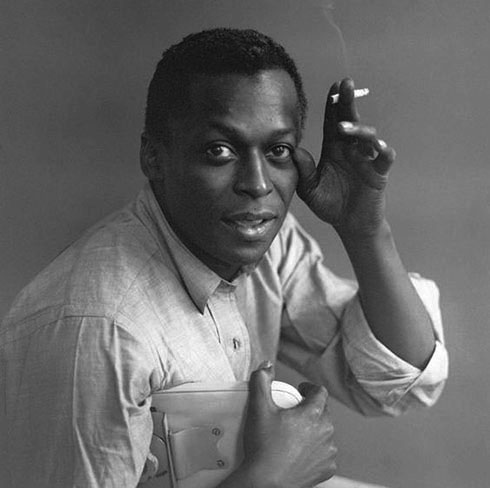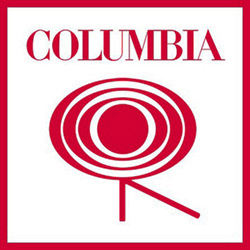Little One
Wayne Shorter (saxo tenor), Miles Davis (trompeta), Herbie Hancock (piano), Ron Carter (contrabajo) y Tony Williams (batería). Extraído del álbum E.S.P. (1965) de Miles Davis.
Miles Davis era un trompetista, líder de banda y compositor norteamericano. A lo largo de su carrera profesional, que se extendió durante cincuenta años, tocó la trompeta con un estilo lírico, introspectivo y melódico, empleando a menudo una sordina Harmon para hacer su sonido más personal e íntimo. Debido a su figura escénica melancólica y su voz ronca tras una operación de laringe era llamado «el príncipe de la oscuridad». Su innegable influencia en el jazz marca la historia de este género desde mediados de los años cuarenta hasta principios de los noventa, comenzando en el bebop y estableciendo las bases del cool jazz, el hard bop, el jazz modal, el post-bop y el jazz fusión. Publicó los álbums fundamentales Birth of the Cool (recopilación en 1957 de temas grabados en 1949 y 1950), Kind of Blue (1959) y Bitches Brew (1970), además de influir con su música en el pop, el rock, el funk, la música electronica y el hip-hop.
Miles Davis was an American trumpeter, bandleader and composer. Throughout his professional career, which spanned fifty years, he played trumpet in a lyrical, introspective and melodic style, often using a Harmon mute to make his sound more personal and intimate. Due to his melancholic stage persona and his hoarse voice after a larynx operation he was called “the prince of darkness”. His undeniable influence on jazz marks the history of this genre from the mid-1940s to the early 1990s, starting in bebop and laying the foundations for cool jazz, hard bop, modal jazz, post-bop and jazz fusion. He released the seminal albums Birth of the Cool (1957 compilation of tracks recorded in 1949 and 1950), Kind of Blue (1959) and Bitches Brew (1970), as well as influencing pop, rock, funk, electronic music and hip-hop with his music.

Davis participó en casi todas las innovaciones producidas en el jazz moderno, siendo a menudo un verdadero pionero, tanto con sus actuaciones y grabaciones como con la elección de sus colaboradores, que a su vez abrieron nuevos caminos. Entre estos destacan los saxofonistas tenor y soprano John Coltrane y Wayne Shorter, y los pianistas y teclistas Herbie Hancock y Chick Corea. Incluso se puede afirmar que el jazz dejó de evolucionar cuando Davis dejó de estar allí para impulsarlo. Davis no era un trompetista virtuoso, como Dizzy Gillespie o Clifford Brown, pero tuvo tres golpes de suerte: tocar con el saxofonista alto y padre del bebop Charlie Parker cuando llegó a Nueva York, firmar con Columbia Records en 1955 tras una extraordinaria interpretación en el Festival de Newport, y aparecer en 1959 en el programa de televisión de la CBS The Robert Herridge Theater tocando «So What».
Davis participated in almost all the innovations produced in modern jazz, often being a true pioneer, both with his performances and recordings and with the choice of his collaborators, who in turn broke new ground. Among these were tenor and soprano saxophonists John Coltrane and Wayne Shorter, and pianists and keyboardists Herbie Hancock and Chick Corea. It can even be argued that jazz stopped evolving when Davis was no longer there to push it forward. Davis was not a virtuoso trumpeter, like Dizzy Gillespie or Clifford Brown, but he had three lucky strikes: playing with alto saxophonist and father of bebop Charlie Parker when he arrived in New York, signing with Columbia Records in 1955 after an extraordinary performance at the Newport Festival, and appearing in 1959 on the CBS television show The Robert Herridge Theater playing “So What”.
Este tema es un blues con una melodía creativa y moderna a tiempo medio. El primero en hacer su solo es Davis siguiendo las armonías del blues añadiendo frases cortas y rápidas. De repente, Carter introduce el walking y el solo de Davis adquiere un carácter distinto, con mucho swing. Le sigue Shorter tocando de forma sugerente frases bien controladas y articuladas, y cuando vuelve a entrar el walking no tienes más remedio que mover los pies. Luego entra Hancock con un conciso discurso a base de acordes antes de que el grupo reexponga el tema desvaneciéndose.
This theme is a blues with a creative and modern melody at medium tempo. The first to solo is Davis following the blues harmonies and adding short and quick phrases. Suddenly, Carter introduces walking and Davis’s solo takes on a different character, with a lot of swing. He is followed by Shorter with suggestive, well controlled and articulated phrases, and when the walking comes back, you have no choice but to move your feet. Then Hancock enters with a concise chord-based speech before the group restates the theme fading out.

Translated with the help of DeepL

R.J.
Wayne Shorter (saxo tenor), Miles Davis (trompeta), Herbie Hancock (piano), Ron Carter (contrabajo) y Tony Williams (batería). Extraído del álbum E.S.P. (1965) de Miles Davis.


